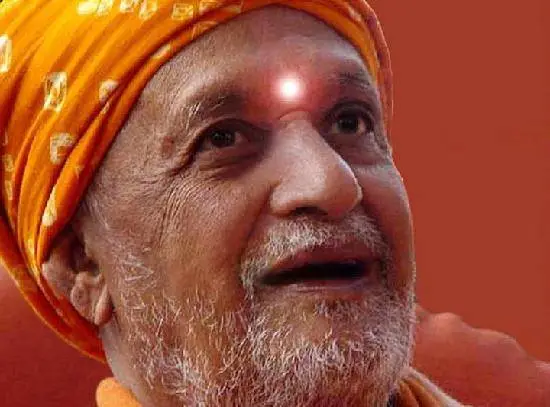
“Swami Satyananda gave yoga a new life, a new birth. He revived yoga – otherwise it
would have been lost. Therefore, Swamiji Satyananda is the Patanjali of today.”
– Swami Niranjanananda Saraswati, Paramacharya, Bihar School of Yoga
Five millennia of history shrouded precious wisdom of yoga with complex teachings, conflicting lineages and myths which made yoga inaccessible to the masses. It was only in the late 19th Century that a movement began to unearth yogic philosophies and practices to better the lives of people by great Swamis with vision, such as SwamiVivekananda. Subsequent disciples have carried on this goal to plant the seeds of yoga around the world for the benefit of humanity, crossing cultural and religious barriers. This ambitious goal to evolve humanity one person at a time by balancing the body, mind and soul would not have been possible through the teaching of a single sage, but through a lineage of selfless Gurus.
However, one Guru stands out in his contribution in making yoga accessible to the modern man. Sri Swami Satyananda Saraswati (1923-2009) took it to heart when his Paramguru, Sri Swami Sivananda Saraswati, missioned him to “spread yoga from door to door, shore to shore.” Swami Satyananda brought yoga out of philosophy and into practice and spread the understanding that yoga was a practical and scientific way to evolve people’s lives. In 1964, Swami Satyananda founded the Bihar School of Yoga in Munger, India, to impart yogic training to sannyasins and householders to further his Guru’s teachings by reviving and evolving ancient yogic science to better suit the demands of those living in the current world.
Roots of Satyananda Yoga
Roots of Bihar Yoga lie in Rishikesh where Swami Satyananda was initiated by Sri Swami Sivananda who developed the Ashtanga Yoga System, emphasizing “serve, love, give, purity, do good, be good, meditate and realize.” These principles continue to be the guiding ideologies of Bihar Yoga today. Swami Satyananda promoted and preserved the classical Vedanta tradition as a philosophy but he also saw the need ofthe practical benefits of Tantric yoga as means to bring relief to people suffering from physical, mental, emotional, moral, and spiritual imbalances. He was aware that yoga was not just a way to spiritual salvation for the few who have renounced the material world, but a necessary lifestyle for lay people to excel in their lives. Additionally, he understood that his integral approach to yoga must be validated by science in order to gain credibility in the modern world. Through self-discovery experimentation and scientific research conducted in laboratories in Europe and the USA, Swami Satyananda gave scientific evidence to the effectiveness of yoga. By identifying the need for change in the approach to yoga, he and his successor, Swami Niranjanananda, spread yoga across the globe.
Integral Approach to Yoga
The Hallmark of Satyananda Yoga, Bihar Yoga, is its integral approach by incorporating various yogic traditions. Not only does this yogic system emphasize its theory in understandable and scientific terms, but designed asana, pranayama, and meditation practices so that everyone can experience the yogic process himself or herself with awareness. Swami Satyananda recognized that all yogic traditions had their benefits and limitations, and these traditions would need to be brought together in a systematized fashion for yoga to be beneficial for all people. Through self discovery experimentation and scientific research conducted in laboratories in Europe and the USA, Swami Satyananda helped validate the effectiveness of yoga in the modern society. He designed a sequence of practices to promote physical and mental balance through hatha yoga and pranayama practices, and mental and emotional stability through meditative practices. Yoga is the state where the head, heart, and hand work in coordination. All components of Satyananda Yoga are vital in the growth of the total human being. The components represent many yoga practices and together makeup an integral whole. The sequence of practices is deliberate to attain a calculated effect on the practitioner.
There are two established schools of yoga, the Northern and Southern. The Northern school indicates the geographic area of the particular yogic traditions and focuses more on meditative practices. The Southern school originates in Southern India and emphasizes physical practices. Yogic traditions are attributed to two sources of origin, Vedanta and Tantra. Vedantic tradition is based on the ancient sacred texts, the Upanishads, which outlines the ultimate truth of the universe as non-dualistic. This tradition emphasizes the philosophical and mental aspects of yoga and the ultimate goal of the practices to be awaked to the unity of all existence. On the other hand,
Significant Contributions to Teaching Techniques
Creation of Pawanmuktasana – PM Series 1-3: Accessible Therapeutic Asanas The creation of the Pawanmuktasana series (PM Series 1-3), therapeutic yogic asana practices divided into 3 groups, allowed practitioners of all physical aptitudes, to benefit from its healing properties. The word pawanmuktasana is composed of three Sanskrit words, which put together, means the posture which releases air.
Creation of Pawanmuktasana – PM Series 1-3: Accessible Therapeutic Asanas
Swami Satyananda made significant contributions in evolving yoga to be a systematic practice yet flexible to meet the needs of all practitioners.
The creation of the Pawanmuktasana series (PM Series 1-3), therapeutic yogic asana practices divided into 3 groups, allowed practitioners of all physical aptitudes, to benefit from its healing properties. The word pawanmuktasana is composed of three Sanskrit words, which put together, means the posture which releases air.

Learn More… Satyananda Yoga The Evolving Yoga: The Revolution in Transforming Society

